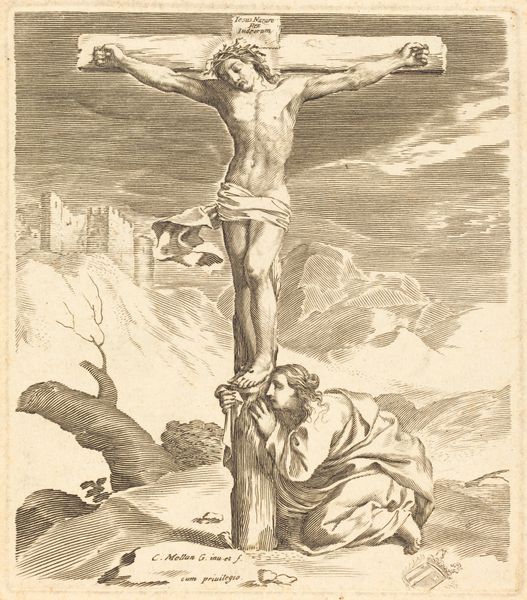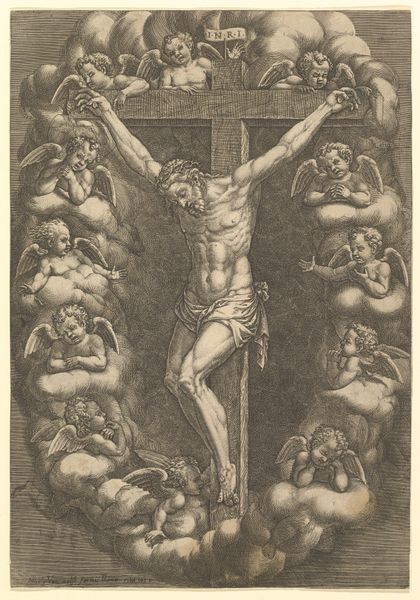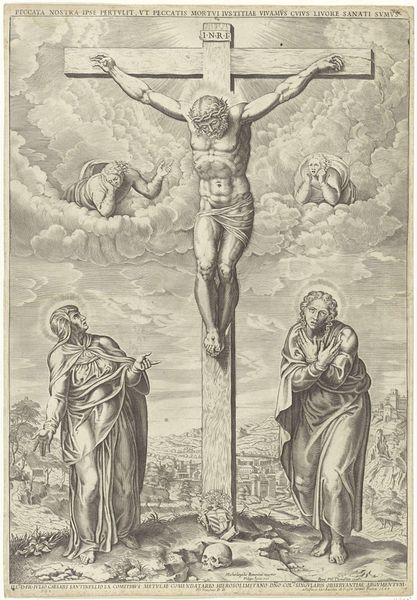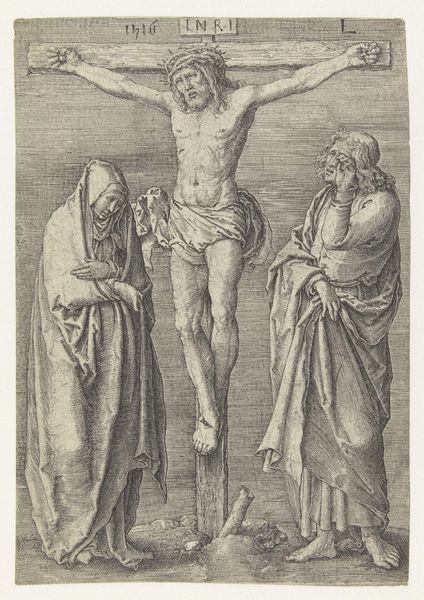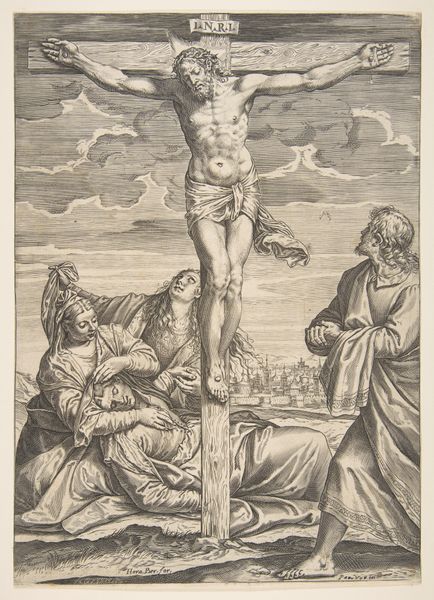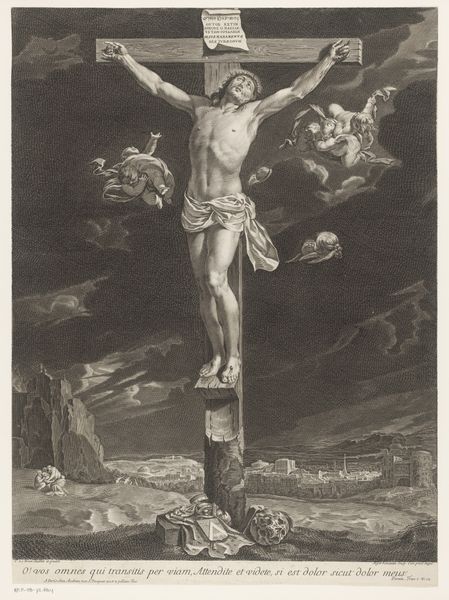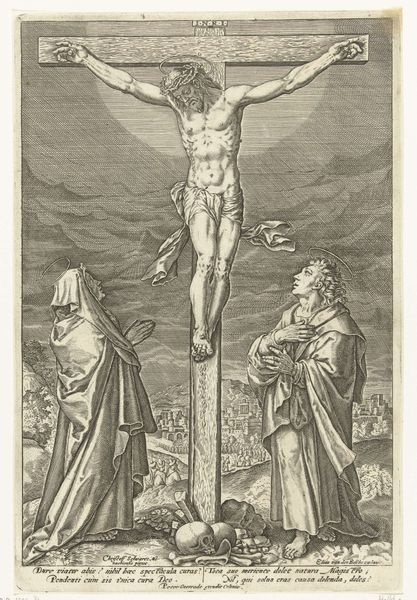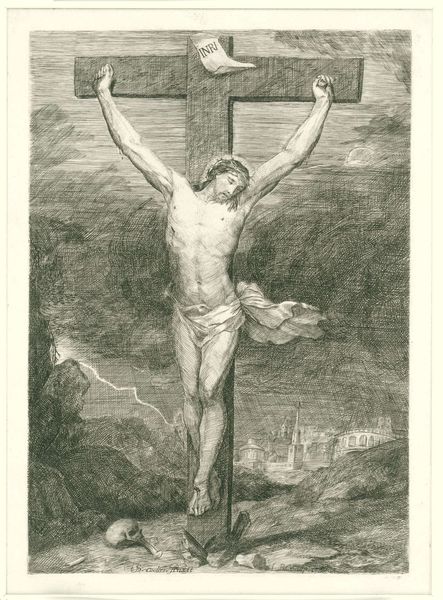
drawing, print, engraving
#
drawing
# print
#
mannerism
#
figuration
#
crucifixion
#
history-painting
#
engraving
Dimensions: Sheet (trimmed): 16 1/4 × 10 1/2 in. (41.3 × 26.7 cm)
Copyright: Public Domain
Nicolas Beatrizet created this engraving, "Crucifixion, after Michelangelo," sometime in the 16th century. The dominant symbol here is, of course, Christ on the cross, a representation of sacrifice and redemption central to Christian faith. Beneath the cross lies a skull, the "memento mori," reminding us of our mortality. Now, consider the crucifixion not just as a singular event, but as a potent image that echoes across cultures. Think of the Dying Gaul, a Hellenistic sculpture. Though pagan, it similarly captures profound suffering and nobility in death. Or consider the countless images of bound and sacrificed figures throughout history. The emotional power lies in the shared human experience of pain, loss, and the search for meaning in suffering. The gesture of Mary, her arm outstretched, questioning, is a poignant expression of grief. It reminds us of figures in ancient Greek tragedies, their arms raised in lament. These gestures, passed down through art, tap into a collective memory, a subconscious understanding of sorrow that transcends time. The image is not just a depiction of death, but a powerful affirmation of life, hope, and the enduring human spirit. These symbols continually resurface, evolve, and take on new meanings, endlessly engaging us in a dialogue across time.
Comments
No comments
Be the first to comment and join the conversation on the ultimate creative platform.
